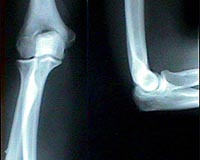 |
Paris (AFP) Sept 22, 2009 Breast and cervical cancers are likely to kill millions of women in developing countries in the coming years, thriving on ignorance of the disease and a lack of means to diagnose and treat it, experts said on Tuesday. Worldwide, incidence of all types of cancer will double over the next two decades, with roughly 26.4 million new cases and 17 million deaths annually by 2030, a coalition of cancer specialists warned at a congress in Berlin. "The global cancer epidemic is not only growing, however, it is also changing," they said in a paper presented at the meeting. "Once considered a disease of wealthy, industrialised societies, cancer is now increasingly a health burden for less-developed regions of the world. "More than half of the 12.4 million estimated new cases of cancer in 2008, and two-thirds of the estimated 7.6 million cancer deaths, occurred in low- and middle-income countries, where cancer kills more people each year than AIDS, TB and malaria." Someone with cancer in a developing country runs triple the risk of dying prematurely compared with a counterpart in a wealthy economy, they said bluntly. The risk is being borne especially by women in resource-poor settings. Success rates for tackling breast and cervical cancers -- dubbed "silent killers" for their lethal stealth -- are rising in wealthy countries. But in developing countries, the disease "remains a low priority" for spending, which is reflected in the death toll, the paper said. More than 272,000 women in poor countries died of cervical cancer in 2007, accounting for 85 percent of the global total. Cases of breast cancer in these countries is also growing at up to 10 times the global average -- up to five percent per year. The study says the rise in cancers can be explained mainly by changing lifestyles and exposure to microbes. Shifting diets and obesity are linked to colon cancer, while infection by the hepatitis B virus, the human papillomavirus (HPV) and Helicobacter pylori bacterium can cause liver cancer, cervical cancer and stomach cancer respectively. But the experts also pointed the finger at a lack of means to spot and treat cancer effectively, and the role of myths, prejudice and stigma in discouraging victims from getting timely medical help. "Women with breast cancer in Ethiopia cite mystical forces, including the 'evil eye,' as possible causes of their illness," they said. "And in Ukraine, women have reported that they were not told they had breast cancer, even when undergoing a mastectomy, because cultural taboos and official polilcy encourage doctors not to reveal a diagnosis of cancer to patients, to spare the sick patient from distress." In India, between 50 and 70 percent of the 75,000 cases of breast cancer diagnosed each year are spotted only an advanced stage. In Europe, only 38 percent of diagnosed cases fall into this category, and the figure in the United States is just 30 percent. "Developing countries need simple diagnostic tools which can be used for poor people in a rural setting," one of the authors, Joseph Saba, told AFP. The paper was authored by a consortium called the Cancer Treatment Informal Working Group (CanTreat International). It was presented at a congress of the European Cancer Organisation (ECCO) and the European Society for Medical Oncology (ECMO). Share This Article With Planet Earth
Related Links Hospital and Medical News at InternDaily.com
 Laser Processes Promise Better Artificial Joints, Arterial Stents
Laser Processes Promise Better Artificial Joints, Arterial StentsWest Lafayette IN (SPX) Sep 16, 2009 Researchers are developing technologies that use lasers to create arterial stents and longer-lasting medical implants that could be manufactured 10 times faster and also less expensively than is now possible. New technologies will be needed to meet the huge global market for artificial hips and knees, said Yung Shin, a professor of mechanical engineering and director of Purdue's Center for ... read more |
|
| The content herein, unless otherwise known to be public domain, are Copyright 1995-2009 - SpaceDaily. AFP and UPI Wire Stories are copyright Agence France-Presse and United Press International. ESA Portal Reports are copyright European Space Agency. All NASA sourced material is public domain. Additional copyrights may apply in whole or part to other bona fide parties. Advertising does not imply endorsement,agreement or approval of any opinions, statements or information provided by SpaceDaily on any Web page published or hosted by SpaceDaily. Privacy Statement |